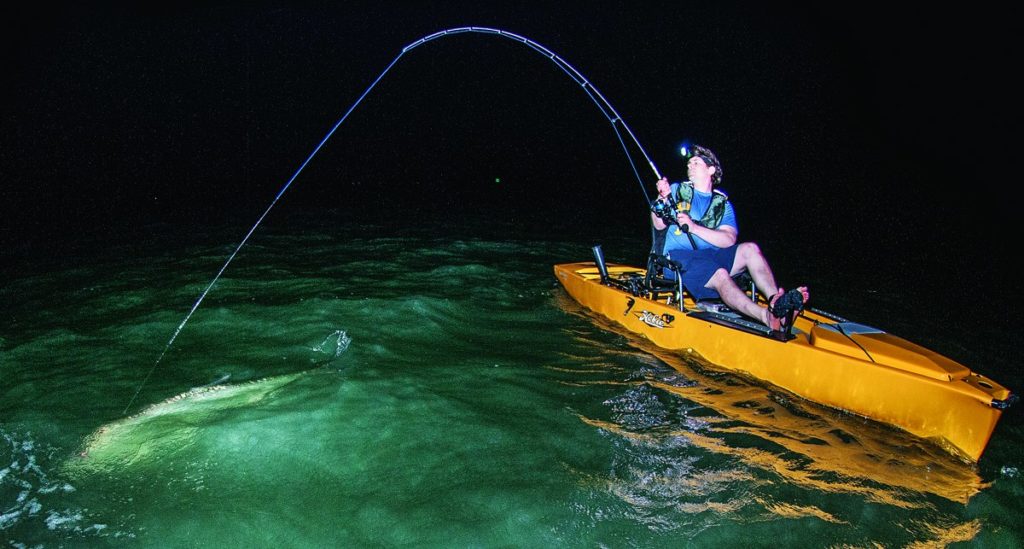
Because braided line has such a thin diameter, the importance of knots used to connect braid to a length of mono or fluorocarbon leader takes on greater significance. Most anglers choose to use a leader with braid, but based on the results of this challenge, it would seem that many are losing 30, 40 and even more than 50 percent of the braid’s breaking strength at that knot. On the other hand, some knots retain 90 to 100 percent of the braid’s strength. The fundamental purpose of this knot challenge is to share with Sport Fishing enthusiasts which knots are the strongest and how they are tied.

How We Tested 53 Fishing Knots
Before we look more closely at the winning knots, here’s how the challenge worked. Those who answered our call for participants could enter in either the light-braid category (15-pound braid to 30-pound fluorocarbon leader) or the heavy-braid category (50-pound braid to 80-pound fluorocarbon), or both. All were sent the same braid and leader so everyone would be working with the same materials.
Specifically, entrants used Spiderwire Stealth Blue Camo Braid in 15-pound-test and Spiderwire Stealth Glow-Vis Braid in 50-pound-test as their main line, tying to Berkley ProSpec fluorocarbon leader in 30-pound and 80-pound, respectively. The 15-pound Spiderwire braid actually broke at 34.4 pounds, on average; the 50-pound Spiderwire broke at 62.8 pounds. That means knots would have had to break at 34.4 and 62.8 pounds to achieve 100 percent strength.
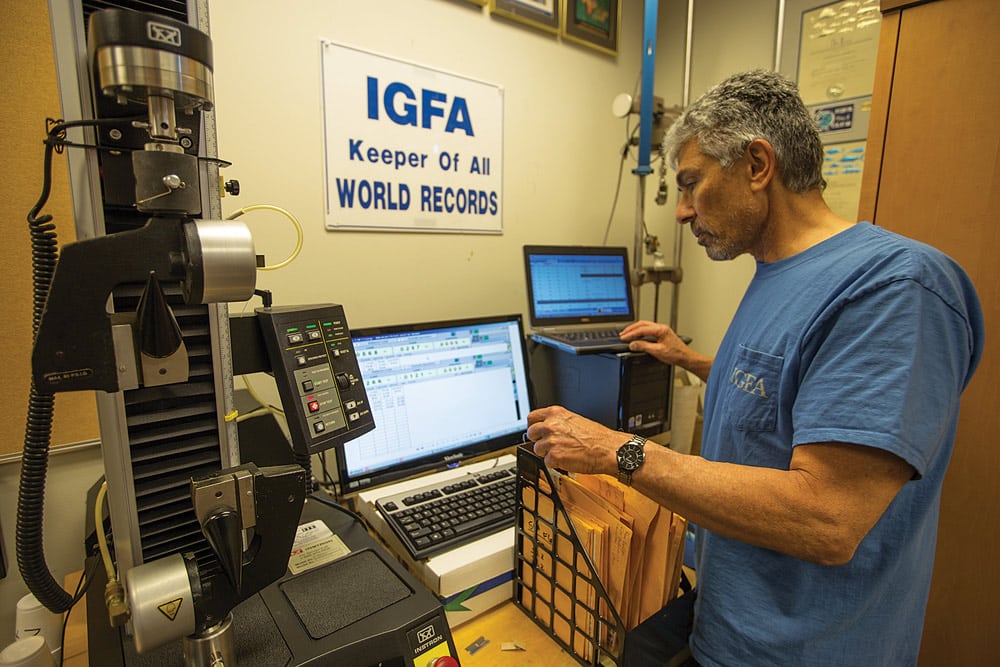
Keep in mind the bottom-line goal of this challenge: Determine the strongest possible knots to connect braid to leader. Given that objective, there were few restrictions. Some tied a double line in the braid, some did not. A few applied glue to their knots. Whatever worked was fair game, as we can all benefit from that knowledge. Those who elected to tie a double line (most often with a Bimini twist) then had two knots to test; they were submitting a “knot system,” if you will.
It was essential to determine which of the two knots tested weaker; that registered as the “weak link” in their system, and that knot was the one that would determine the strength of their method of connecting braid to leader. (In some cases, the weaker knot was the Bimini twist; in other cases, the knot connecting the doubled braid to the leader proved weaker.)
Each entrant submitted three samples of the same knot, so the strength measured represents the mean of the three break tests.
The Best Knots for 15-Pound Braided Fishing Line
As the charts you’ll see a bit farther down show, the strength of these knots was pretty much all over the place, from 100 percent to as little as about 17 percent. For lighter braid (15-pound tied to 30-pound fluoro), here are the three strongest knots, in order.
PR Bobbin Knot — 84.3 Percent Break Strength
Tied by Capt. Bryan Dietz of Merritt Island, Florida

Improved FG Knot — 80.9 Percent Break Strength
Tied by Capt. Tim Simos of Fort Pierce, Florida

FG knot — 73.4 Percent Break Strength
Tied by Ralph Green of Mount Pleasant, South Carolina

The Best Knots for 50-Pound Braided Fishing Line
For heavier braid (50-pound tied to 80-pound fluoro), here are the four strongest knots, in order.
GT Knot — 100 Percent Break Strength
Tied by Chad Nisely of Painesville, Ohio

PR Bobbin Knot — 99.5 Percent Break Strength
Tied by Bryan Dietz of Merritt Island, Florida
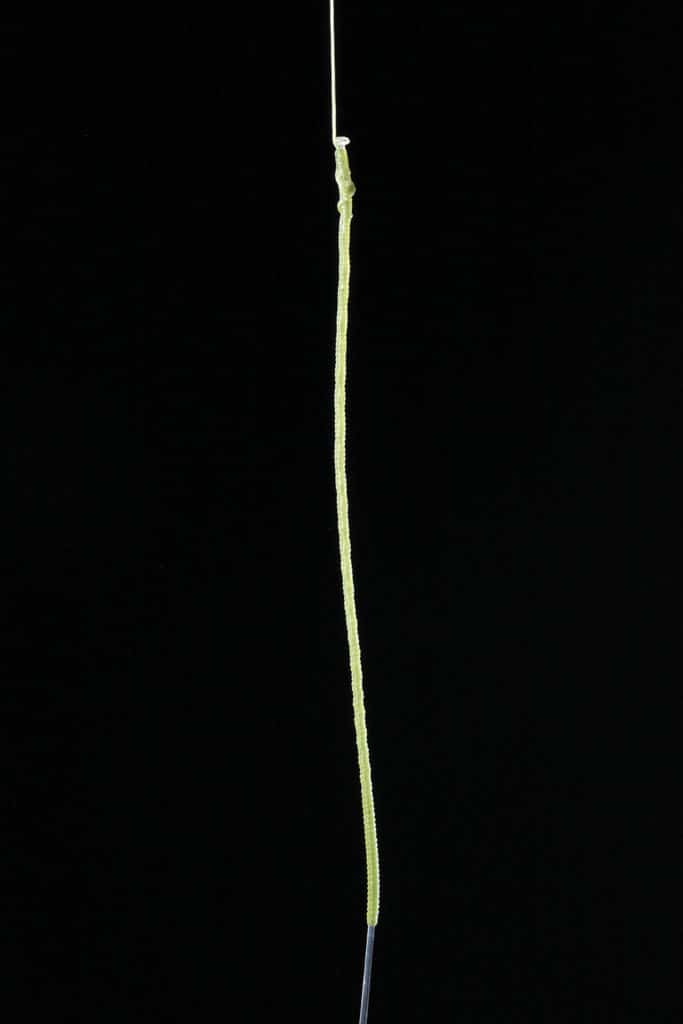
Improved Bristol Knot — 92.1 Percent Break Strength
Tied by Doug Olander of Winter Park, Florida
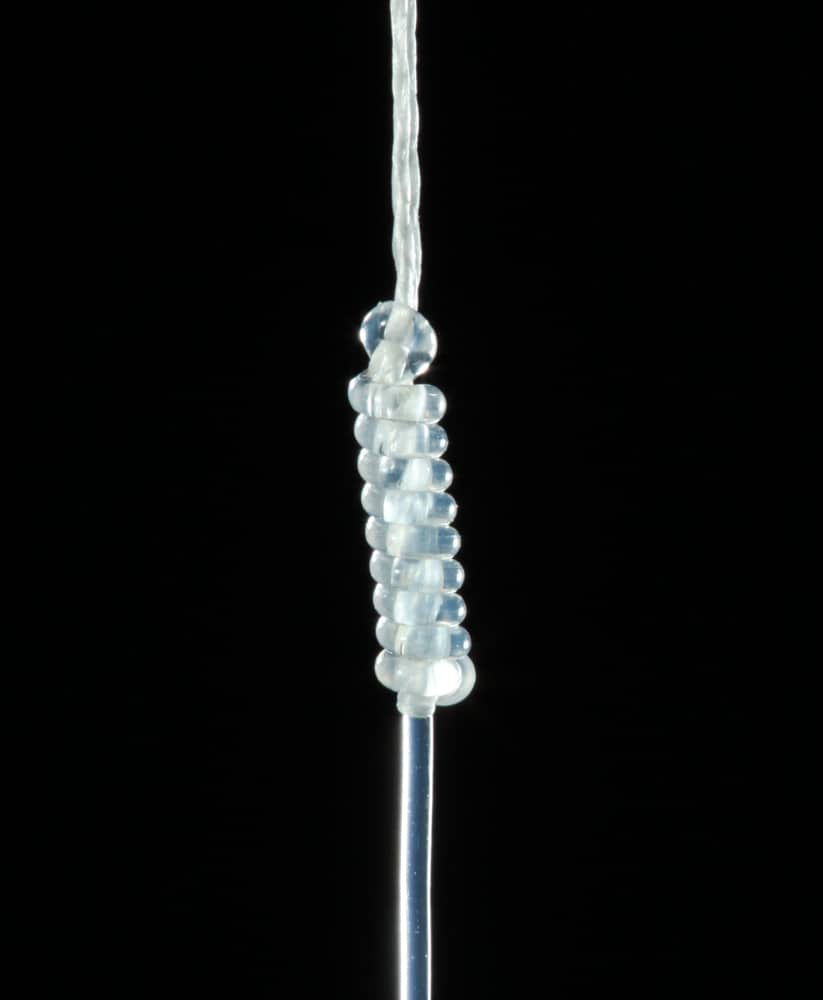
Improved FG Knot — 82.1 Percent Break Strength
Tied by Capt. Tim Simos of Fort Pierce, Florida

Two Charts Showing the Strongest Fishing Knots
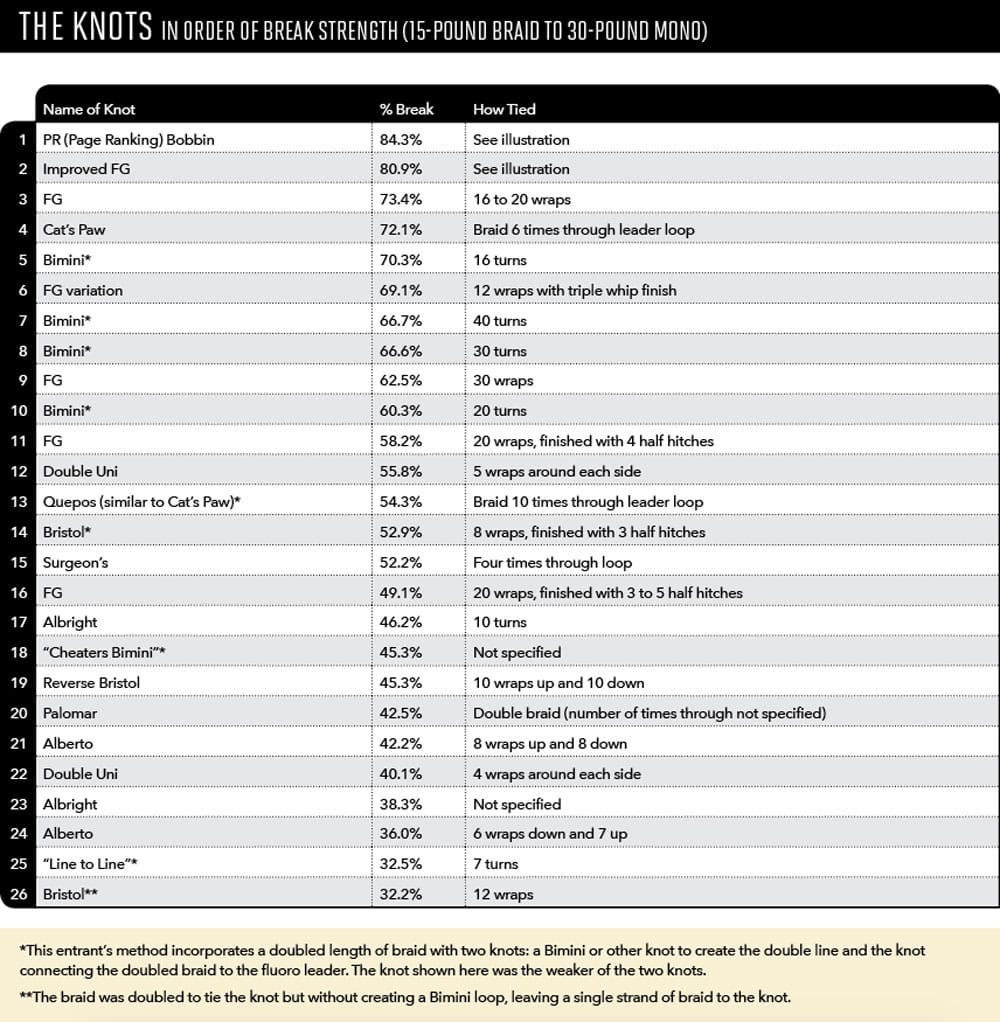
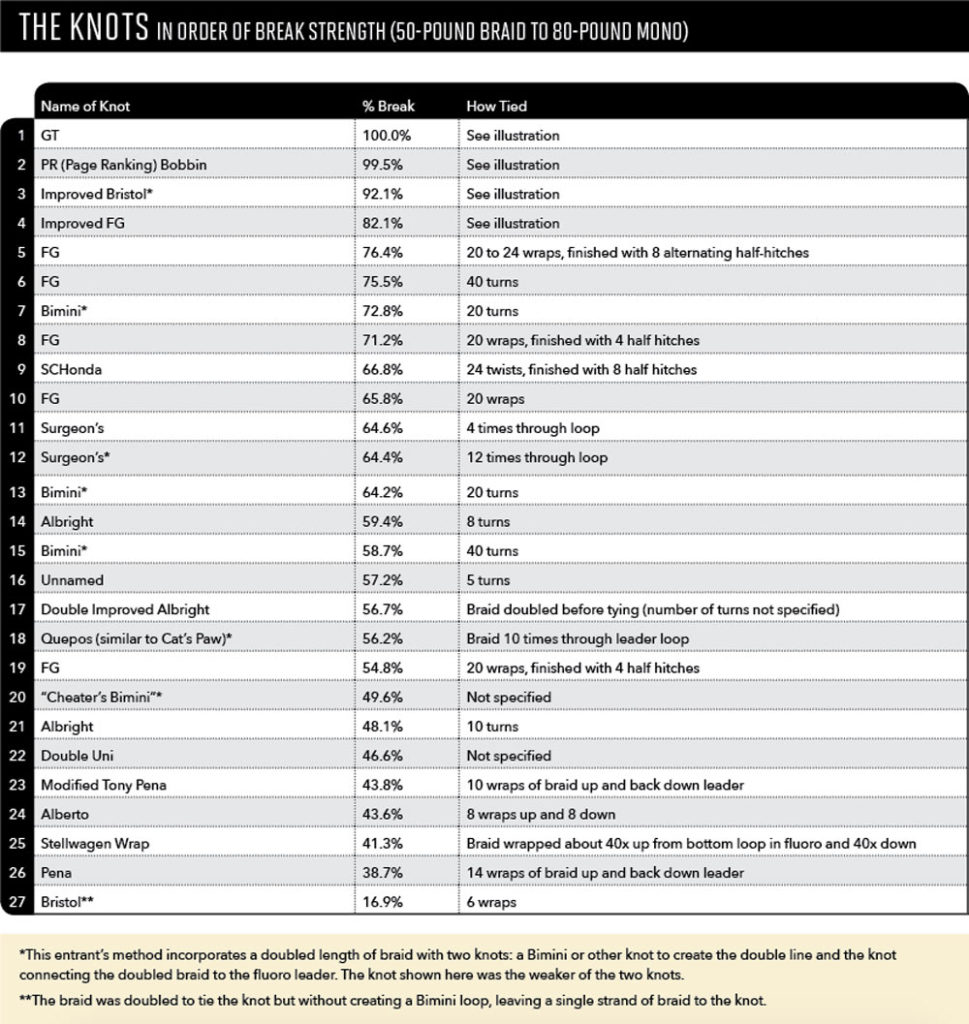
What to Consider When Tying Fishing Knots
Knot-tiers are becoming more sophisticated, at least based on comparison to a similar Sport Fishing knot challenge years ago. Most of the winning knots here aren’t simple or quickly tied (many best tied the evening before a fishing trip rather than on the water in a hurry in rough seas), but the results speak for themselves.
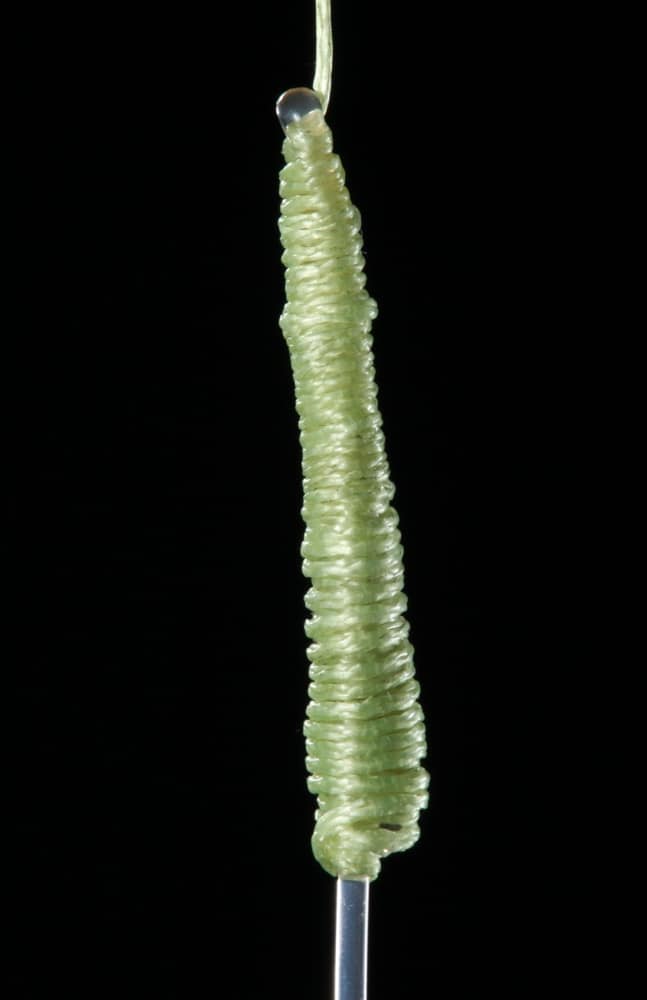
Another change from the previous knot challenge is the prevalence of single-line knots among better entries. That is, years ago, most of the strongest knots tested were formed from a double line made with a Bimini twist, such as a Bristol (aka Yucatan or no-name knot). This year, only one such knot scored among the best. All other top knots tie the single-strand main line directly to the leader. The FG knot has become quite popular, for example. Also, it should be noted that the time some anglers took to tie elaborate knots connecting doubled braid to leader wasn’t effectively spent since their Bimini twists broke first.

It seems that tying knots approaching 100-percent strength might be inherently more difficult with lighter braided line. The percentages of the two best results with 15-pound braid were in the lower 80s, while three entries with 50-pound braid tested between 92 and 100 percent. (Two knots finished among the top three in both light- and heavy-braid categories, but tested weaker with the lighter braid).
It’s not just the knot; how it’s tied is strategic. That is, in some cases, very similar or even the same knots tied by different entrants tested far differently, suggesting slight variations in how they were tied could make a considerable difference.

Albrights and double-uni knots are very popular — but are they the best knots? One result consistent in this challenge was that Albright and uni knots to connect braid to leader scored pretty low. Lots of anglers — and pros — swear by them, and certainly, a knot you can tie efficiently, with lots of confidence, is important. But the Instron tester suggests anglers can do better.

How to Tie the PR Bobbin Knot
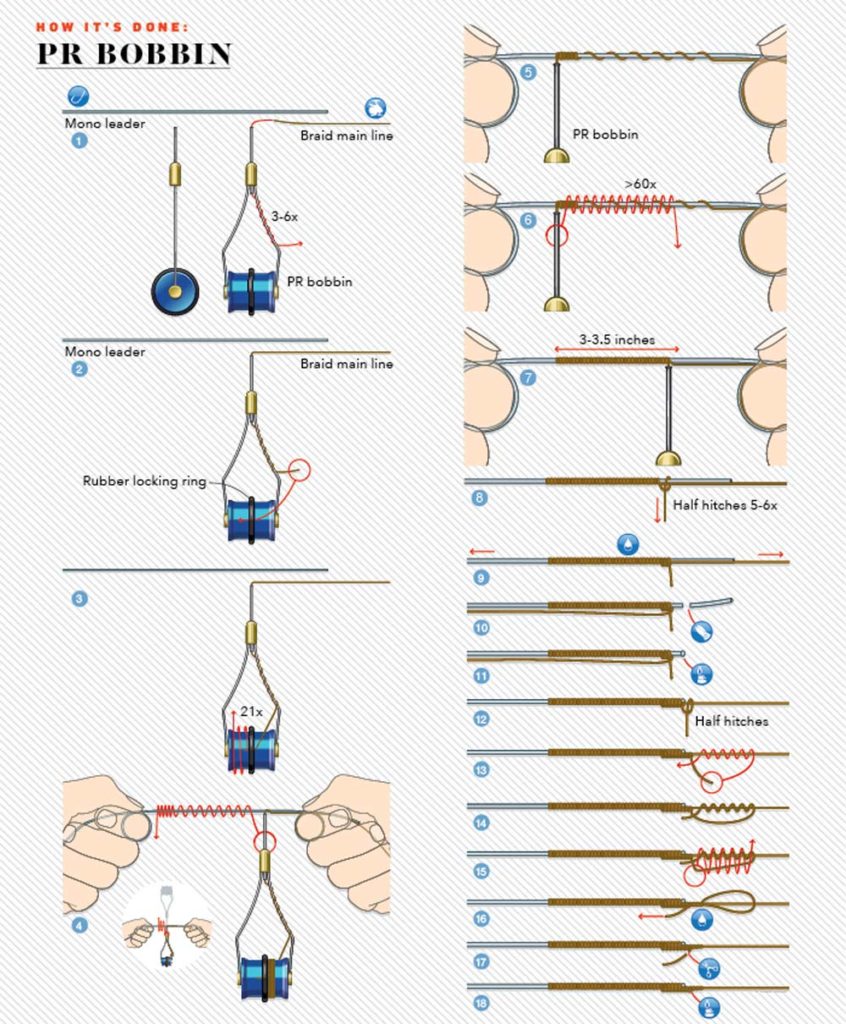
How to Tie the Improved FG Knot

How to Tie the GT Knot

How to Tie the Improved Bristol Knot
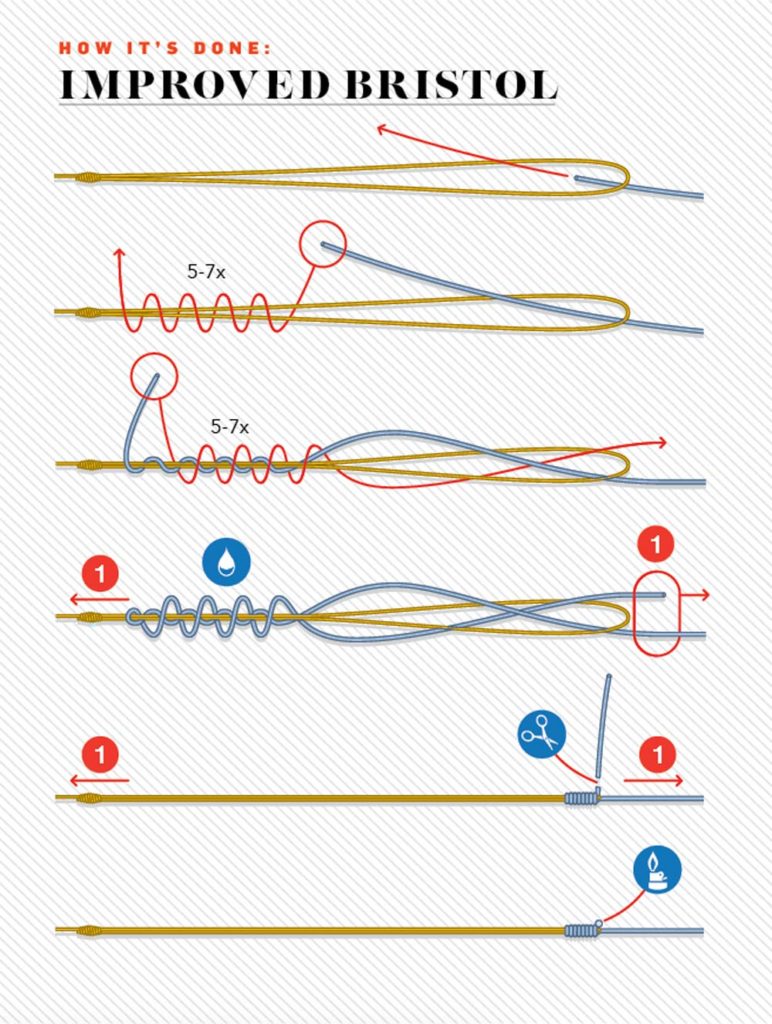
Top Fishing Captains Favorite Knots
I asked these charter captains and guides how they choose to connect a braid main line to a fluoro or mono leader. Here’s what they said:
- Rich Adler, Singer Island, Florida
Albright for light braid, FG for heavy braid Comment: Albright is fast; never had one fail. - Antonio “Tuba” Amaral, Canavieiras, Brazil
Bobbin knot - Richard Andrews, North Carolina
Double uni for light braid. For heavy braid, Bristol, with a spider hitch to create a loop in the braid. - David Bacon, Santa Barbara, California
Reverse Albright. Comment: We have tried many other knots, but we always come back to the reverse Albright. - Kevin Beach, Venice, Louisiana
Modified reverse Albright - Mark Bennett, Englewood, Florida
Double uni, with a spider hitch to create a loop in the braid. Comment: I find the spider hitch with braid tends to hold up better than a Bimini. - Brian Clancy, Oak Hill, Florida
Double uni - Rob Delph, Key West, Florida
FG and modified slim beauty Comment: FG is the strongest, best knot. - Brent Gaskill, Gulfport, Florida
Bristol (Yucatan), with a five-turn overhand knot to create a loop in the braid - Paul Hobby, Ft. Myers, Florida
Double uni, first doubling the braid - Ned Kittredge, Dartmouth, Massachusetts
Double uni - Dave Kostyo, Miami, Florida
Single uni and clinch knot, with a Bimini twist to create a loop in the braid - Damon McKnight, Venice, Louisiana
Double uni. Comment: I’ve caught everything from 3-pound redfish to 500-pound blue marlin using this connection; I can tie it quickly, and it works every time. Also, I like it because if you don’t tie it correctly, it’s obvious.
- John McMurray, New York City
Blood knot for lighter braid (first doubling the braid); slim beauty for heavier braid - Rick Murphy, Florida City, Florida
Double uni, with a Bimini twist to create a loop in the braid - Tony Murphy, Key West, Florida
Blood knot for lighter braid; Albright for heavier - Tommy Pellegrin, Houma, Louisiana
Albright - Jason Pipe, Canary Islands
FG Comment: A Japanese client showed this to me in 2004, and I’ve used it ever since. - Mike Roy, Old Saybrook, Connecticut
FG (at home) or double uni (on the water, first doubling the braid) - Scott Simpson, Long Beach, Mississippi
Double uni - Bouncer Smith, Miami, Florida
Double uni - Jason Stock, Holmes Beach, Florida
Double uni or three surgeons for lighter braid; Bristol, with a Bimini twist to create a loop in the braid, for heavier braid) - William Toney, Homosassa, Florida
Four to five surgeons for lighter braid; for heavier braid, same knot but using a Bimini twist to create a loop in the braid. Comments: It’s a quick, strong knot that gets my clients back to fishing. I’ve never had this knot fail. - Tom Van Horn, Chuluota, Florida
Double uni, using a Bimini twist to create a loop in the braid - Steve Zernia, Seward, Alaska
Improved Albright, using a Bimini twist to create a loop in the braid








